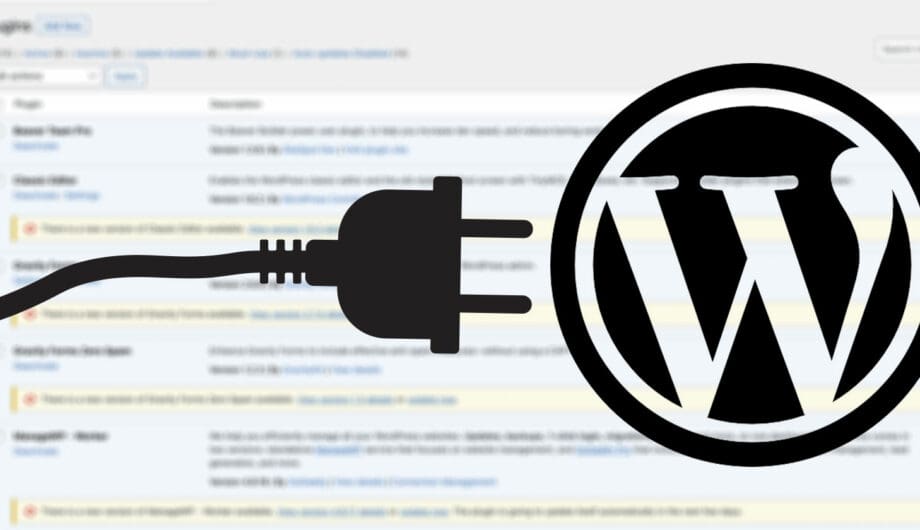
WordPress is one of the most popular content management systems in the world, powering millions of websites globally. One of the reasons behind its popularity is its vast library of plugins, which can be used to add functionality and enhance your website’s performance. However, updating WordPress plugins regularly is important for a variety of reasons.
Why Updating WordPress Plugins is Important
Security
The number one reason to regularly update your plugins is security. It’s no longer a world of “set it and forget it.” WordPress plugins are created by a diverse range of developers, and they may contain vulnerabilities that could be exploited by hackers. When a vulnerability is discovered, plugin developers release a patch that fixes the issue. If you don’t update your plugins, your website could be at risk of being hacked, and you could lose your valuable data or compromise your users’ information. And trust me when I say that cleaning up a hacked site is way, way worse than logging in to update your plugins.
Performance
Plugins play a significant role in the performance of a WordPress website. As developers discover performance issues, they release updates that fix the problems. Updating WordPress plugins ensures that your website is running the latest version, which includes bug fixes and performance enhancements, resulting in a faster and more efficient website.
Compatibility
As WordPress evolves, plugins need to keep up with the changes to remain compatible. Failure to update your plugins could result in compatibility issues, and your website could break or become dysfunctional. Updating WordPress plugins ensures that your website remains compatible with the latest version of WordPress and other plugins you may have installed.
Reasons why someone might not be running plugin updates
Fear: Every time I login to a new client’s existing website, I am afraid of how many out-of-date plugins and themes I’m going to find. One time I logged in and was shocked at how out-of-date it was. When I asked why none of the updates had been run, the response I got was, “The person who made it told me not to, he said updates would break the site.”
Can an update break the site? Yes, that can happen. This is why it’s important to always backup your WordPress website. However, in my experience, if you are using trusted and vetted plugins, and your website hosting is solid, the vast majority of the time, updates will not break your site.
(And if the person who made a site tells you that updates will break it, that probably means they modified core WordPress, theme, or plugin files, which would be overwritten on an update, therefore could cause a site to break. Definitely not a recommended way to build a site.)
Best Methods to Update Plugins
- Automatic Updates
WordPress has a feature that allows plugins to be updated automatically. This feature is enabled by default, and WordPress will automatically update your plugins when a new version is available. This method is convenient and ensures that your website is always running the latest version of the plugins. This method can be controversial among the WordPress community because updates can run when you aren’t on your site or looking at it, and you may not notice that something has happened or been changed on your site.
- Manual Updates
Manual updates involve downloading the latest version of the plugin and installing it on your website. To update a plugin manually, you need to go to the plugins page, locate the plugin you want to update, and click the update button. This method is more time-consuming than automatic updates, but it gives you more control over the updating process. If you login to your site and you see update notifications, I generally recommend you go ahead and run those.
- SFTP Updates
SFTP (Secure File Transfer Protocol) updates involve connecting to your website’s server using an SFTP client and manually uploading the plugin files. This method is recommended for advanced users who are comfortable with the SFTP process. To update a plugin using SFTP, you need to download the latest version of the plugin from the WordPress plugin repository, extract the files, and upload them to the appropriate directory on your website’s server.
- Sumy Support Plan
What do I recommend for updating WordPress plugins? The best option is to sign up for a support plan with Sumy Designs. Not only do we make sure that your site’s updates are run regularly, but we are making daily backups and monitoring your uptime as well, so if something happens, we will know and can deal with it. This takes the pressure off of you, and allows you to know that your website will be up and running and secure.
By regularly updating your plugins, you can ensure that your website runs smoothly and efficiently. So, don’t neglect your WordPress plugins and keep your website running at its best!
Amy Masson
Amy is the co-owner, developer, and website strategist for Sumy Designs. She's been making websites with WordPress since 2006 and is passionate about making sure websites are as functional as they are beautiful.
